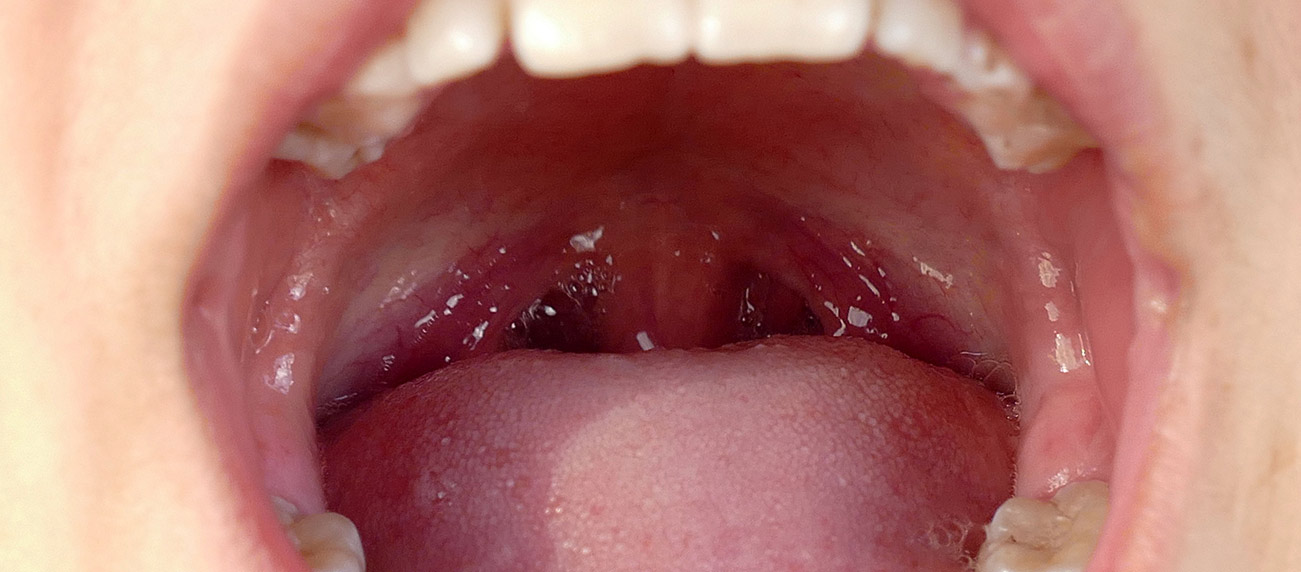Patient Resources Helpful Articles
Helpful Articles
What Are Tonsil Stones and What Do I Do About Them?

If you’re suffering from perpetual bad breath (halitosis), you may want to take a closer look at your tonsils. If you spot small white or yellow bumps, you might have tonsilloliths or tonsil stones.
What are Tonsils?
Your tonsils are located at the back of your throat. These oval-shaped bits of tissue are made up of folds, gaps and crevices called tonsillar crypts. Your tonsils work as part of your immune system when they filter out bacteria and viruses that enter your body through your mouth. However, removing your tonsils does not impact your overall immune system.
What are Tonsil Stones?
You may never have heard of tonsil stones, but much like they sound, they are small bumps that form in your tonsils. Typically, they are not painful or cause any adverse health effects. They are formed of small trapped particles of food or meat that are stuck in the tonsils. These tiny lumps form when debris gets trapped in the tonsillar crypts. Minerals, food, bacteria or fungi can become trapped and then calcify, forming the “stones”.
You may have one or many of these tiny “stones” which are white or yellow.
Am I at Risk of Tonsil Stones?
There are several criteria that affect your risk of tonsil stones. If you’ve had a lot of tonsil infections, it is more likely you will get tonsil stones (also called tonsilliths). Tonsil stones tend to appear more often in teens as well as people with more tonsillar crypts. However, tonsil stones are very common and many people don’t even know they have them.
How Do I Know If I Have Tonsil Stones?
Many times people have tonsil stones and don’t even realize it. You may notice these tiny stones if you frequently have bad breath, a perpetual cough, earaches or sore throat. Another symptom is a bad taste in your mouth or you may even spit up a small white or yellow stone after coughing. People may even notice or comment on your bad breath.
Some people with tonsil stones experience difficulty swallowing or feel like something is stuck in their throat. You may notice those tiny stones on your tonsils when you look in the mirror and you may experience antibiotic-resistant throat infections.
To be officially diagnosed, your healthcare provider will look inside your mouth and throat or perform an imaging scan if the stones are not easily visible. Sometimes tonsil stones are discovered during a visit to the dentist.
How Are Tonsil Stones Treated?
While tonsil stones are not a threat to your overall health, most doctors recommend brushing your teeth regularly and gargling with warm salt water if you have them.
Gargling not only helps your throat feel better, it can also dislodge the tonsil stones. A good practice is to gargle after eating to prevent bits of food from getting caught within the folds of tissue of your tonsils.
You may be tempted to reach back with your toothbrush or even a finger to scrape them off but we caution people that doing so can scratch your delicate tonsils which can cause infection or bleeding.
If you have problematic tonsil stones or they are causing chronic bad breath or other issues, you may choose to have them removed surgically. In some cases, your doctor may recommend a tonsil cryptolysis. This procedure uses coblation to smooth the surface area of the tonsils. This process decreases the size of the tonsils, leaving enough tissue to not injure the throat but removing the environment for tonsil stones to grow.
Conclusion
If you are concerned about tonsil stones, bad breath, or halitosis, Dr. Brian Rotenberg can help. If tonsil stones are the cause, he can assess your situation and recommend the best treatment plan for you and your health.

